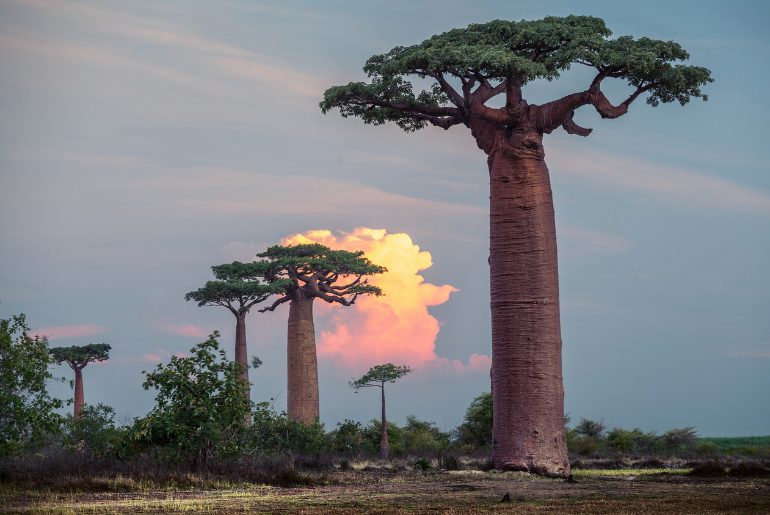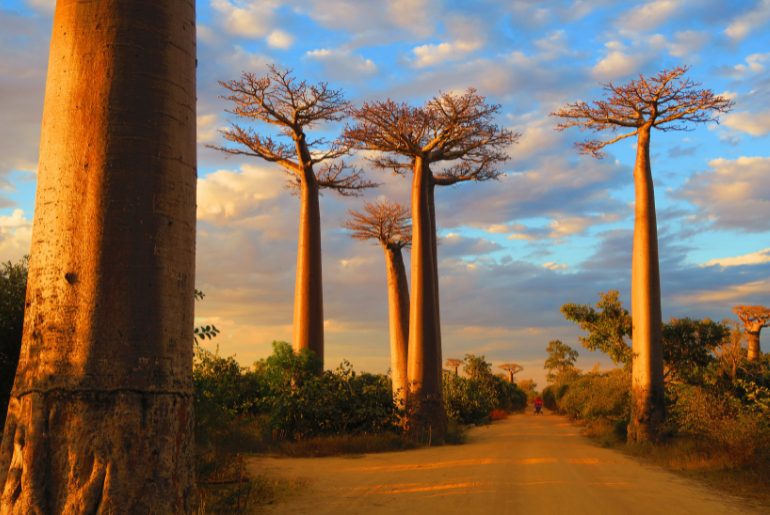Discover the Power of AI in Today’s Current Affairs
In the enchanting forests of Madagascar, where ancient baobab trees rise majestically, artificial intelligence has become a surprising hero in conservation efforts. Today’s Current Affairs spotlight how AI is helping us understand and protect these iconic trees from extinction. By working with local communities and using cutting-edge technology, researchers are pioneering innovative strategies to save Madagascar’s baobabs while empowering the people who depend on them. Dive in to learn more about this incredible synergy between tradition and technology!
How many hectares of baobab habitat are destroyed each year due to slash-and-burn agriculture?
– 1,000 hectares
– 2,000 hectares
– 4,000 hectares
– 6,000 hectares
Answer: 4,000 hectares
Who is leading the efforts to understand and conserve Madagascar’s baobab forests?
– John Doe
– Seheno Andriantsaralaza
– Mary Johnson
– David Smith
Answer: Seheno Andriantsaralaza
What has diminished significantly due to the loss of large-bodied animals?
– Natural seed dispersal
– Water resources
– Timber production
– Mineral extraction
Answer: Natural seed dispersal
What technologies are being used to track the success of reforestation efforts?
– Drones and GPS
– Satellite imagery and AI
– Manual surveys
– Soil analysis tools
Answer: Satellite imagery and AI
Which animal species have been identified to aid in seed dispersal for baobabs?
– Elephants and monkeys
– Birds and bats
– Giant tortoises and small rodents
– Snakes and lizards
Answer: Giant tortoises and small rodents
What project is specifically mentioned for offering hope for Madagascar’s baobab trees?
– SOS Baobab Project
– ARO Baobab Project
– Save the Baobab Foundation
– Baobab Heroes Initiative
Answer: ARO Baobab Project
What community role is emphasized in the conservation strategies for baobab forests?
– Local men’s clubs
– Local women’s involvement and decision-making
– Children’s education programs
– Senior citizen advisory boards
Answer: Local women’s involvement and decision-making
What has climate change exacerbated in regards to baobab trees?
– Tourism
– Deforestation
– Timber production
– Mining activities
Answer: Deforestation
What is the role of artificial intelligence in the conservation of Madagascar’s baobab trees?
Artificial intelligence (AI) plays a significant role in the conservation of Madagascar’s baobab trees by enhancing our understanding and protection methods. It helps in gathering and analyzing data about these trees, which is crucial for making effective conservation strategies. AI can process large amounts of information quickly, giving researchers and conservationists real-time insights and predictive analyses that aid in safeguarding these ancient trees.
How is the local community involved in the restoration of baobab forests?
The local community is deeply involved in the restoration efforts of baobab forests. They partner with conservation projects to sustainably harvest baobab fruit, ensuring that sufficient seeds remain for natural regeneration. Additionally, community members participate in growing and transplanting baobab seedlings back into the wild. This engagement not only helps in forest restoration but also strengthens community ties and boosts local job opportunities.
What challenges are baobab trees in Madagascar facing?
Baobab trees in Madagascar face several challenges, primarily due to deforestation from slash-and-burn agriculture which destroys their habitat at an alarming rate. This habitat loss is compounded by climate change, making it even harder for these trees to survive. Furthermore, the decline of large-bodied animals that previously helped in seed dispersal has significantly reduced natural regeneration of baobab trees.
Who is Seheno Andriantsaralaza and what role does she play in baobab conservation?
Seheno Andriantsaralaza is a tropical ecologist who has been leading efforts to understand and conserve Madagascar’s baobab forests since 2009. She focuses on addressing the complex challenges these trees face through her research and practical conservation actions. Andriantsaralaza actively engages with local communities and utilizes innovative strategies to mitigate the threats to baobabs, aiming for a sustainable and holistic conservation approach.
How does the project empower local women and promote gender equity?
The project empowers local women by involving them in all stages of the conservation process, from decision-making to active fieldwork. By giving women significant roles in the project, it promotes gender equity and strengthens community resilience. This inclusive approach ensures that the benefits of conservation efforts are equitably shared and that diverse perspectives are integrated into the strategies employed.
What innovative technologies are used in the baobab conservation project?
The project uses cutting-edge technologies such as satellite imagery and artificial intelligence provided by EOS Data Analytics. These tools help in meticulously monitoring the progress of reforestation efforts and adapting strategies based on real-time data. By leveraging these advanced technologies, the project can track the success of planting initiatives and make informed decisions to enhance conservation outcomes.
What is the ARO Baobab Project and what does it aim to achieve?
The ARO Baobab Project is an initiative aimed at conserving and restoring Madagascar’s baobab trees. Through collaborative research, community engagement, and innovative conservation strategies, the project seeks to address the decline in baobab populations. Its goals include restoring baobab habitats, promoting sustainable practices, and empowering local communities, particularly women, to ensure the long-term survival of these iconic trees.
In the heart of Madagascar’s lush landscapes, where ancient baobab trees have stood for centuries, a new crucial tool has joined the fight for conservation: artificial intelligence. AI is set to change the way we understand and protect our natural world. But how does this futuristic technology play a role in saving the baobabs from extinction? Explore how AI is helping safeguard Madagascar’s forests.
Partnering With Communities To Restore Madagascar’s Baobab Forests


Madagascar's baobab trees, known for their monumental presence and ecological role, are in crisis. Annually, 4,000 hectares of their habitat are lost due to slash-and-burn agriculture. This not only destroys the invaluable landscape but also endangers local communities’ livelihoods and unique biodiversity.
Seheno Andriantsaralaza, a tropical ecologist, has led the charge in conserving Madagascar’s baobab forests since 2009. She addresses the complex challenges these trees face through her research and initiatives, according to The Conversation.
Baobabs are vital to Madagascar both ecologically and culturally. However, deforestation, driven by poverty and climate change, pushes them towards extinction. An essential part of the problem is the loss of large animals that used to disperse baobab seeds. With these animals gone, natural seed dispersal is minimal now.
Empowering Women With AI In Baobab Conservation


One innovative method is to partner with local communities to sustainably harvest baobab fruit, leaving enough seeds for regeneration. Research identified animals like giant tortoises and small rodents that still help with seed dispersal.
The project has set up nurseries growing thousands of baobab seedlings, which are then transplanted back into the wild. Through cutting-edge technologies like satellite imagery and artificial intelligence from EOS Data Analytics, the project monitors reforestation efforts and adjusts strategies as needed.
By involving local women in decision-making, Andriantsaralaza's work not only aims to save the baobabs but also promotes gender equity and community resilience. Through collaborative research, community engagement, and innovative conservation strategies, projects like the ARO Baobab Project offer hope for the future of Madagascar’s iconic trees. Today’s Current Affairs spotlight the crucial role of AI and community efforts in preserving these natural treasures.
Cover Image Courtesy: Canva
For more interesting updates on food, travel, and local experiences, download the Curly Tales App HERE.





